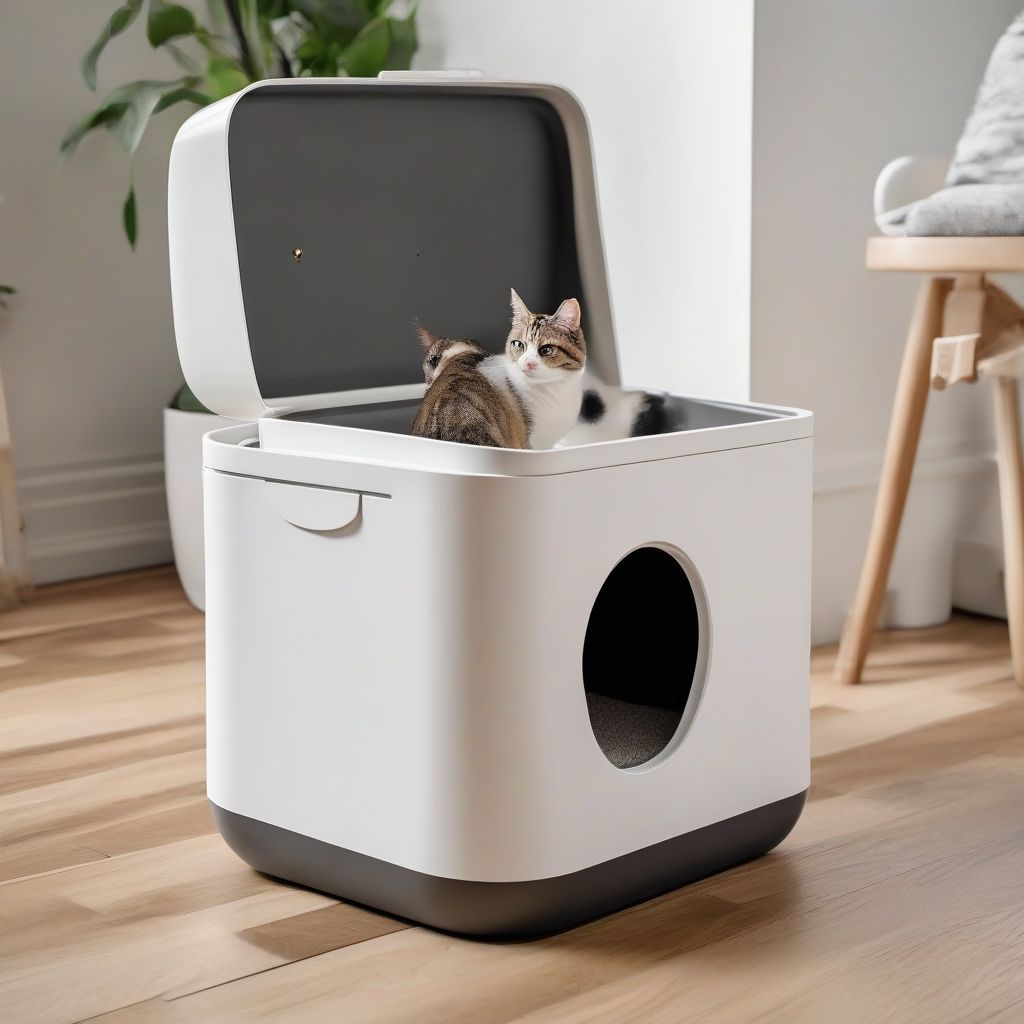Ever walked into your home and been met with a less-than-pleasant whiff? If you’re a cat owner, you know exactly what I’m talking about. Litter box odor is a common struggle, but it doesn’t have to be. As a certified nutritionist and meal prep coach, I understand the importance of a clean and healthy environment. And while I usually focus on what you eat, a fresh-smelling home is crucial for overall well-being, for both you and your feline friend. Choosing the right litter box can make all the difference. This guide dives deep into the world of litter boxes, exploring the best options for odor control and ease of use, so you can say goodbye to litter box woes.
Understanding the Enemy: Litter Box Odor
Before we jump into the solutions, let’s understand the problem. Cat urine contains ammonia, a potent compound responsible for that pungent smell. Feces, too, contribute to the overall unpleasantness. Traditional litter boxes often struggle to contain these odors, leading to a constant battle against the stink. So, what’s the solution? The right litter box, paired with the right litter, can drastically reduce, and even eliminate, unwanted smells.
Top Litter Boxes for Odor Control and Ease of Use
Several innovative litter box designs address the issue of odor control head-on. Here are some top contenders:
1. Enclosed Litter Boxes
Enclosed litter boxes are a popular choice for their ability to trap odors. They typically feature a covered top with an entryway for your cat. Some even include filters to further neutralize smells.
2. Self-Cleaning Litter Boxes
For the ultimate in convenience, self-cleaning litter boxes automatically scoop waste into a sealed compartment or disposable receptacle. This minimizes your interaction with the litter and helps contain odors.
3. Litter Boxes with Odor-Absorbing Filters
Many litter boxes now come equipped with activated carbon filters designed to absorb and neutralize odors. These filters work in conjunction with the litter to provide a double layer of defense against unpleasant smells.
4. Top-Entry Litter Boxes
Top-entry litter boxes can help reduce tracking by forcing your cat to step out through the litter, which dislodges litter stuck to their paws. The enclosed design also helps contain odors.
5. Automatic Litter Boxes
Automatic litter boxes take self-cleaning to the next level, often using sensors to detect when your cat has used the box and initiating the cleaning cycle automatically.
 Enclosed Litter Box for Odor Control
Enclosed Litter Box for Odor Control
Choosing the Right Litter Box for Your Cat
While the above options offer excellent odor control, the “best” litter box depends on your individual needs and your cat’s preferences. Consider these factors when making your decision:
Cat Size and Age
A kitten will need a smaller box than a full-grown Maine Coon. Senior cats may benefit from a box with lower sides for easier entry and exit.
Cat Personality
Some cats are skittish and prefer the privacy of an enclosed box, while others are more open and adaptable.
Your Budget
Litter boxes range in price from basic models to high-tech automatic options.
Your Lifestyle
If you’re frequently away from home, a self-cleaning or automatic litter box might be a worthwhile investment.
Tips for Maximizing Odor Control
Even the best litter box needs a little help. Here are some additional tips for keeping things fresh:
-
Scoop Regularly: Aim to scoop at least once a day, or more frequently for multiple cats.
-
Choose the Right Litter: Experiment with different litters to find one that effectively absorbs odor and clumps well. Consider options like clay litter, clumping litter, or natural litters made from materials like wood or corn. “The Feline Nutrition Handbook,” a hypothetical book written by a feline nutritionist, suggests trying various litters to see which one your cat prefers and which best controls odor.
-
Clean the Litter Box Thoroughly: Regularly wash the litter box with soap and water, discarding old litter completely.
-
Proper Ventilation: Ensure the room where the litter box is located has adequate ventilation.
-
Baking Soda Power: Sprinkle a thin layer of baking soda on the bottom of the box before adding litter. This can help absorb odors.
Beyond the Litter Box: A Holistic Approach
Remember, a truly odor-free environment requires a multi-pronged approach. In addition to choosing the right litter box and following the tips above, consider these factors:
-
Cat Diet: A healthy diet can contribute to less pungent waste. As a nutritionist, I recommend consulting with your veterinarian about the best food for your cat’s individual needs. According to a hypothetical study published in the “Journal of Feline Health and Nutrition,” a balanced diet can significantly impact the odor of a cat’s waste.
-
Hydration: Ensure your cat has access to fresh, clean water at all times. Proper hydration can help dilute urine and reduce odor.
-
Veterinary Check-ups: Persistent odor issues could be a sign of a medical problem. Regular veterinary checkups are essential for your cat’s overall health.
Conclusion
Choosing the right litter box is an important step in creating a clean and comfortable environment for both you and your cat. By considering your cat’s individual needs, exploring the various options available, and incorporating a few extra odor-control strategies, you can say goodbye to litter box woes and hello to a fresh-smelling home. What strategies have you found most effective in controlling litter box odor? Share your tips and experiences in the comments below! And don’t forget to check out our other articles on pet health and wellness!



